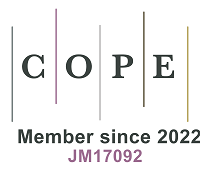REFERENCES
1. Frank, S. D.; Tooker, J. F. Opinion: Neonicotinoids pose undocumented threats to food webs. Proc. Natl. Acad. Sci. U. S. A. 2020, 117, 22609-13.
2. Stanley, D. A.; Garratt, M. P.; Wickens, J. B.; Wickens, V. J.; Potts, S. G.; Raine, N. E. Neonicotinoid pesticide exposure impairs crop pollination services provided by bumblebees. Nature 2015, 528, 548-50.
3. Kessler, S.; Tiedeken, E. J.; Simcock, K. L.; et al. Bees prefer foods containing neonicotinoid pesticides. Nature 2015, 521, 74-6.
4. Chen, D.; Zhang, Y.; Lv, B.; et al. Dietary exposure to neonicotinoid insecticides and health risks in the Chinese general population through two consecutive total diet studies. Environ. Int. 2020, 135, 105399.
5. Zhang, C.; Yi, X.; Chen, C.; et al. Contamination of neonicotinoid insecticides in soil-water-sediment systems of the urban and rural areas in a rapidly developing region: Guangzhou, South China. Environ. Int. 2020, 139, 105719.
6. Wang, X.; Goulson, D.; Chen, L.; et al. Occurrence of neonicotinoids in Chinese apiculture and a corresponding risk exposure assessment. Environ. Sci. Technol. 2020, 54, 5021-30.
7. Song, S.; Zhang, T.; Huang, Y.; et al. Urinary metabolites of neonicotinoid insecticides: levels and recommendations for future biomonitoring studies in China. Environ. Sci. Technol. 2020, 54, 8210-20.
8. Zhang, T.; Song, S.; Bai, X.; et al. A nationwide survey of urinary concentrations of neonicotinoid insecticides in China. Environ. Int. 2019, 132, 105114.
9. Wang, A.; Mahai, G.; Wan, Y.; et al. Assessment of imidacloprid related exposure using imidacloprid-olefin and desnitro-imidacloprid: neonicotinoid insecticides in human urine in Wuhan, China. Environ. Int. 2020, 141, 105785.
10. Xu, M.; Zhang, Z.; Li, Z.; et al. Profiles of neonicotinoid insecticides and characteristic metabolites in paired urine and blood samples: partitioning between urine and blood and implications for human exposure. Sci. Total. Environ. 2021, 773, 145582.
11. Zhang, H.; Shen, K.; Wu, R.; et al. Occurrence and distribution of neonicotinoids and characteristic metabolites in paired urine and indoor dust from young adults: Implications for human exposure. Environ. Res. 2021, 199, 111175.
12. Yao, Y. N.; Song, S.; Huang, Y.; Kannan, K.; Sun, H.; Zhang, T. Insights into free and conjugated forms of neonicotinoid insecticides in human serum and their association with oxidative stress. Environ. Health. 2023, 1, 121-9.
13. Zhang, H.; Bai, X.; Zhang, T.; et al. Neonicotinoid insecticides and their metabolites can pass through the human placenta unimpeded. Environ. Sci. Technol. 2022, 56, 17143-52.
14. Xu, L.; Xu, X.; Wu, X.; Kuang, H.; Xu, C. Sex-dependent environmental health risk analysis of flupyradifurone. Environ. Sci. Technol. 2022, 56, 1841-53.
15. Xu, L.; Xu, X.; Guo, L.; et al. Potential environmental health risk analysis of neonicotinoids and a synergist. Environ. Sci. Technol. 2021, 55, 7541-50.
16. Wrobel, S. A.; Bury, D.; Hayen, H.; Koch, H. M.; Brüning, T.; Käfferlein, H. U. Human metabolism and urinary excretion of seven neonicotinoids and neonicotinoid-like compounds after controlled oral dosages. Arch. Toxicol. 2022, 96, 121-34.
17. Wrobel, S. A.; Bury, D.; Koslitz, S.; et al. Quantitative metabolism and urinary elimination kinetics of seven neonicotinoids and neonicotinoid-like compounds in humans. Environ. Sci. Technol. 2023, 57, 19285-94.
18. Zhang, Q.; Lu, Z.; Chang, C. H.; Yu, C.; Wang, X.; Lu, C. Dietary risk of neonicotinoid insecticides through fruit and vegetable consumption in school-age children. Environ. Int. 2019, 126, 672-81.
19. Zhao, Y.; Zhu, Z.; Xiao, Q.; et al. Urinary neonicotinoid insecticides in children from South China: concentrations, profiles and influencing factors. Chemosphere 2022, 291, 132937.
20. Wang, H.; Yang, D.; Fang, H.; et al. Predictors, sources, and health risk of exposure to neonicotinoids in Chinese school children: a biomonitoring-based study. Environ. Int. 2020, 143, 105918.
21. Mendy, A.; Pinney, S. M. Exposure to neonicotinoids and serum testosterone in men, women, and children. Environ. Toxicol. 2022, 37, 1521-8.
22. Nishihama, Y.; Nakayama, S. F.; Isobe, T.; Kamijima, M.; Japan Environment Children’s StudyGroup. Association between maternal urinary neonicotinoid concentrations and child development in the Japan Environment and Children’s Study. Environ. Int.2023, 181, 108267.
23. Fu, J.; Yao, Y.; Huang, Z.; et al. Prenatal exposure to neonicotinoids and the associations with neonatal birth outcomes and maternal health in South China. Expo. Health. 2025, 17, 97-108.
24. Pan, C.; Yu, J.; Yao, Q.; et al. Prenatal neonicotinoid insecticides exposure, oxidative stress, and birth outcomes. Environ. Int. 2022, 163, 107180.
25. Pan, D.; Lin, M.; Mu, C.; et al. Maternal exposure to neonicotinoid insecticides and fetal growth restriction: a nested case-control study in the Guangxi Zhuang birth cohort. Chemosphere 2023, 336, 139217.
26. Mahai, G.; Wan, Y.; Xia, W.; et al. Exposure assessment of neonicotinoid insecticides and their metabolites in Chinese women during pregnancy: a longitudinal study. Sci. Total. Environ. 2022, 818, 151806.
27. Oya, N.; Ito, Y.; Ebara, T.; et al. Cumulative exposure assessment of neonicotinoids and an investigation into their intake-related factors in young children in Japan. Sci. Total. Environ. 2021, 750, 141630.
28. Ueyama, J.; Harada, K. H.; Koizumi, A.; et al. Temporal levels of urinary neonicotinoid and dialkylphosphate concentrations in Japanese women between 1994 and 2011. Environ. Sci. Technol. 2015, 49, 14522-8.
29. Wang, A.; Wan, Y.; Mahai, G.; et al. Association of prenatal exposure to organophosphate, pyrethroid, and neonicotinoid insecticides with child neurodevelopment at 2 years of age: a prospective cohort study. Environ. Health. Perspect. 2023, 131, 107011.
30. Li, A. J.; Si, M.; Yin, R.; et al. Detection of neonicotinoid insecticides and their metabolites in human cerebrospinal fluid. Environ. Health. Perspect. 2022, 130, 127702.
31. Ospina, M.; Wong, L. Y.; Baker, S. E.; Serafim, A. B.; Morales-Agudelo, P.; Calafat, A. M. Exposure to neonicotinoid insecticides in the U.S. general population: data from the 2015-2016 national health and nutrition examination survey. Environ. Res. 2019, 176, 108555.
32. Anand, N.; Chakraborty, P.; Ray, S. Human exposure to organochlorine, pyrethroid and neonicotinoid pesticides: comparison between urban and semi-urban regions of India. Environ. Pollut. 2021, 270, 116156.
33. Nimako, C.; Ikenaka, Y.; Akoto, O.; et al. Human exposures to neonicotinoids in Kumasi, Ghana. Environ. Toxicol. Chem. 2021, 40, 2306-18.
34. Tu, H.; Wei, X.; Pan, Y.; et al. Neonicotinoid insecticides and their metabolites: specimens tested, analytical methods and exposure characteristics in humans. J. Hazard. Mater. 2023, 457, 131728.
35. Cimino, A. M.; Boyles, A. L.; Thayer, K. A.; Perry, M. J. Effects of neonicotinoid pesticide exposure on human health: a systematic review. Environ. Health. Perspect. 2017, 125, 155-62.
36. Caron-Beaudoin, É.; Viau, R.; Sanderson, J. T. Effects of neonicotinoid pesticides on promoter-specific aromatase (CYP19) expression in Hs578t breast cancer cells and the role of the VEGF pathway. Environ. Health. Perspect. 2018, 126, 047014.
37. Wang, X.; Anadón, A.; Wu, Q.; et al. Mechanism of neonicotinoid toxicity: impact on oxidative stress and metabolism. Annu. Rev. Pharmacol. Toxicol. 2018, 58, 471-507.
38. Shao, X.; Xia, S.; Durkin, K. A.; Casida, J. E. Insect nicotinic receptor interactions in vivo with neonicotinoid, organophosphorus, and methylcarbamate insecticides and a synergist. Proc. Natl. Acad. Sci. U. S. A. 2013, 110, 17273-7.
39. Di, P. G.; Cavaliere, V.; Annoscia, D.; et al. Neonicotinoid clothianidin adversely affects insect immunity and promotes replication of a viral pathogen in honey bees. Proc. Natl. Acad. Sci. U. S. A. 2013, 110, 18466-71.
40. Wang, P. W.; Huang, Y. F.; Fang, L. J.; Chen, M. L. Prenatal and childhood neonicotinoid exposure and neurodevelopment: a study in a young Taiwanese cohort. Sci. Total. Environ. 2024, 946, 174232.
41. Sheets, L. P.; Li, A. A.; Minnema, D. J.; Collier, R. H.; Creek, M. R.; Peffer, R. C. A critical review of neonicotinoid insecticides for developmental neurotoxicity. Crit. Rev. Toxicol. 2016, 46, 153-90.
42. Xu, X.; Wang, X.; Yang, Y.; et al. Neonicotinoids: mechanisms of systemic toxicity based on oxidative stress-mitochondrial damage. Arch. Toxicol. 2022, 96, 1493-520.
43. Walderdorff, L.; Laval-Gilly, P.; Wechtler, L.; Bonnefoy, A.; Falla-Angel, J. Phagocytic activity of human macrophages and Drosophila hemocytes after exposure to the neonicotinoid imidacloprid. Pestic. Biochem. Physiol. 2019, 160, 95-101.
44. Chen, Y.; Yu, W.; Zhang, L.; et al. First evidence of neonicotinoid insecticides in human bile and associated hepatotoxicity risk. J. Hazard. Mater. 2023, 446, 130715.
45. Arfat, Y.; Mahmood, N.; Tahir, M. U.; et al. Effect of imidacloprid on hepatotoxicity and nephrotoxicity in male albino mice. Toxicol. Rep. 2014, 1, 554-61.
46. Godbole, A. M.; Chen, A.; Vuong, A. M. Associations between neonicotinoids and liver function measures in US adults: National Health and Nutrition Examination Survey 2015-2016. Environ. Epidemiol. 2024, 8, e310.
47. Zhang, Z.; Shen, L.; Chen, M.; et al. The alarming link between neonicotinoid insecticides and kidney injury. Emerg. Contam. 2024, 10, 100376.
48. Zou, Y.; Zhang, L.; Yue, M.; et al. Reproductive effects of pubertal exposure to neonicotinoid thiacloprid in immature male mice. Toxicol. Appl. Pharmacol. 2023, 474, 116629.
49. Nili-Ahmadabadi, A.; Soleimanipour, Z.; Artimani, T.; Asl, S. S.; Ahmadimoghaddam, D. Effects of thiacloprid, a neonicotinoid pesticide, on rat reproductive system: pregnancy hormone disruption and abortion trends. Pestic. Biochem. Physiol. 2024, 205, 106166.
50. Shi, X.; Jiang, L.; Wang, H.; Qiao, K.; Wang, D.; Wang, K. Toxicities and sublethal effects of seven neonicotinoid insecticides on survival, growth and reproduction of imidacloprid-resistant cotton aphid, Aphis gossypii. Pest. Manag. Sci. 2011, 67, 1528-33.
51. Lu, C.; Chang, C. H.; Palmer, C.; Zhao, M.; Zhang, Q. Neonicotinoid residues in fruits and vegetables: an integrated dietary exposure assessment approach. Environ. Sci. Technol. 2018, 52, 3175-84.
52. Zhang, D.; Lu, S. Human exposure to neonicotinoids and the associated health risks: a review. Environ. Int. 2022, 163, 107201.
53. Wang, A.; Wan, Y.; Zhou, L.; et al. Neonicotinoid insecticide metabolites in seminal plasma: associations with semen quality. Sci. Total. Environ. 2022, 811, 151407.
54. Qin, R.; Zhang, B.; Zhu, H.; Chen, Y.; Song, S.; Zhang, T. Exposure to per- and polyfluoroalkyl substances, neonicotinoid insecticides, benzotriazoles and benzothiazoles: associations with human non-alcoholic fatty liver disease. Environ. Chem. Ecotoxicol. 2024, 6, 283-92.
55. Luo, H.; Sun, Y.; Pan, J.; et al. Residual distribution and risk assessment of neonicotinoids in urban green space soils of the pearl river delta, South China: a socioeconomic analysis. J. Hazard. Mater. 2024, 477, 135330.
56. Chen, X.; Xu, D.; Xiao, Y.; et al. Multimedia and full-life-cycle monitoring discloses the dynamic accumulation rules of PFAS and underestimated foliar uptake in wheat near a fluorochemical industrial park. Environ. Sci. Technol. 2024, 58, 18088-97.
57. Garreta, E.; Kamm, R. D.; Chuva, S. L. S. M.; et al. Rethinking organoid technology through bioengineering. Nat. Mater. 2021, 20, 145-55.







